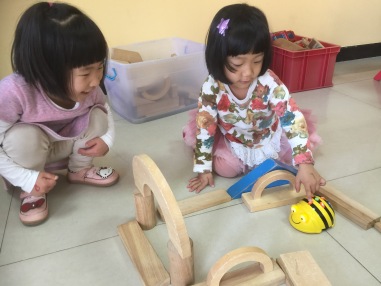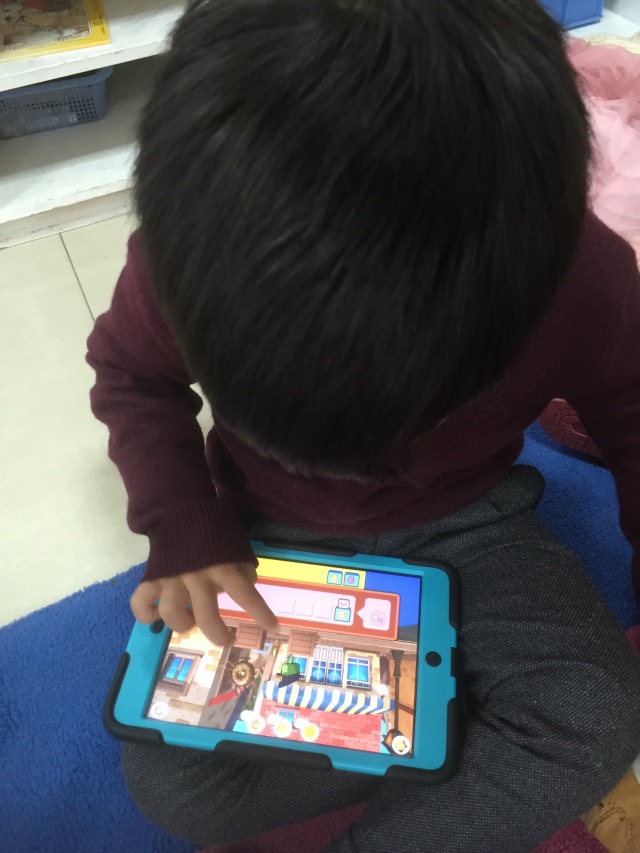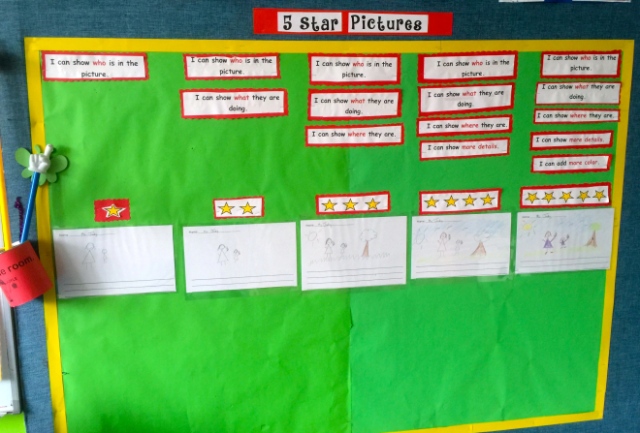Coding in the Early Years
Well I am back in the Early Years until one of our teachers returns from maternity leave. It’s been an interesting shift back since this is a mixed classroom, with 3-5 year olds. I decided to incorporate coding as a part of our math language development, with a focus on positional words.
I’ve had to do a lot of songs and games to get my ELLs familiar with all of this language. They really loved this video from Scratch Garden: Left and Right Song. Then we started talking about how we might do programming in the real world with giving directions to one of our “robot” friends. In our introductory activity, a friend had to get to the telephone, so students would take turns to “program”them with the directions they needed.


There was a lot of discussion about how to walk to the telephone- you can walk “this way, then that way”. As a result of eliminating confusion and focusing on the positional language ( in this case, right/left/backwards/forwards), we took away some of the foam mats so the path looked more obvious ( and it mimicked more for using the BeeBot- which is where we were heading). Something great about using the mats was that the kids could really see the one-to-one correspondence that they needed to grasp for programming. However, this activity did have some limitations because they couldn’t understand how a code might need to be cancelled if something changed in the program.

However, this was their first step and had more success in this way as the students began to get the concepts. This paved the way with using the BeeBot. We only have one in our class, so I used it as a center/station activity. We practiced looking at the symbols on the BeeBot and how we could use them and explored using it before setting up obstacles or using it in play scenarios.




As their understanding progressed, we worked on the BeeBot and Foos apps on the iPads. Our tech integrator came in to assist during our school’s celebration of the Hour of Code. He was happy to see how some of the kids were progressing and helped me to assess where students were at in their learning journeys.

































